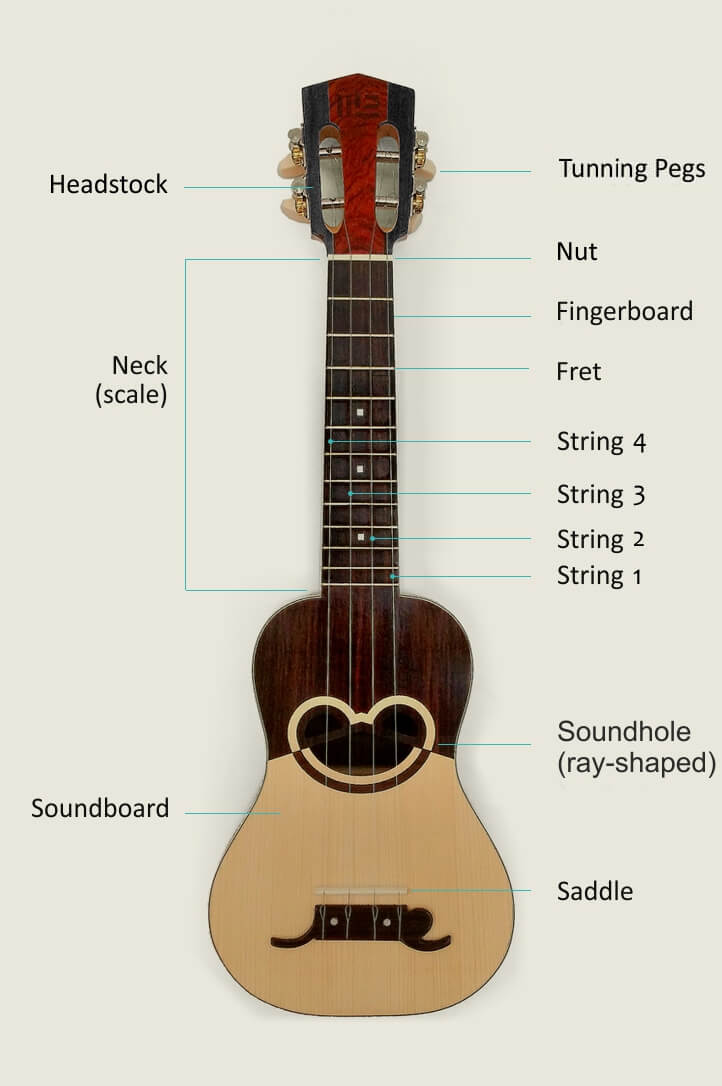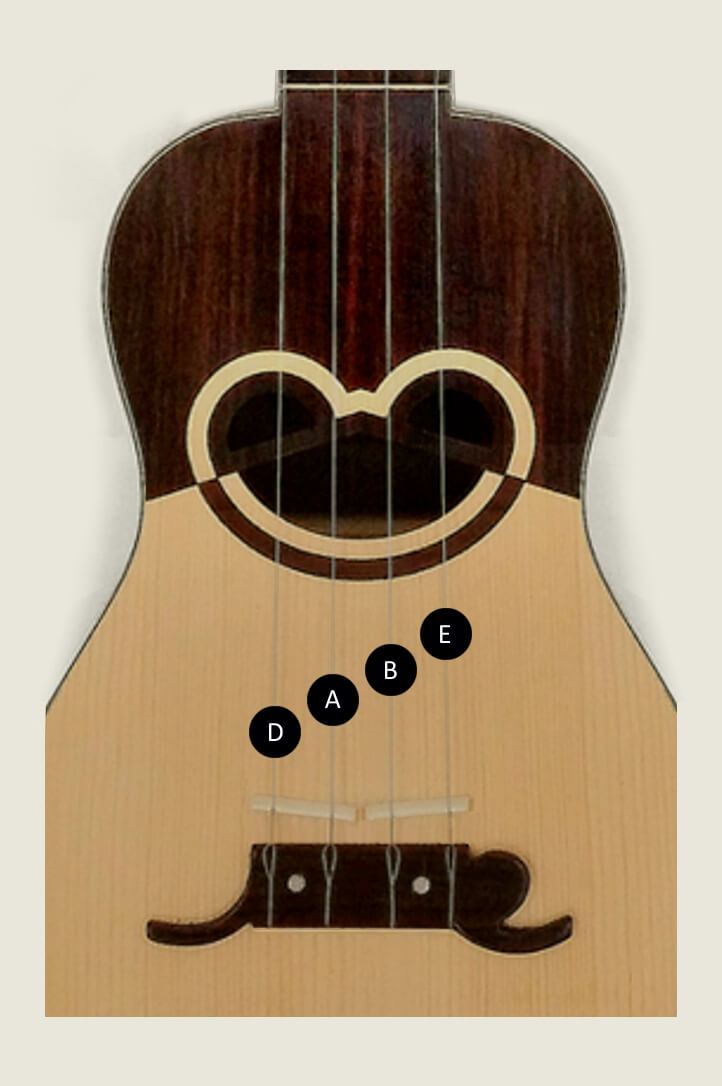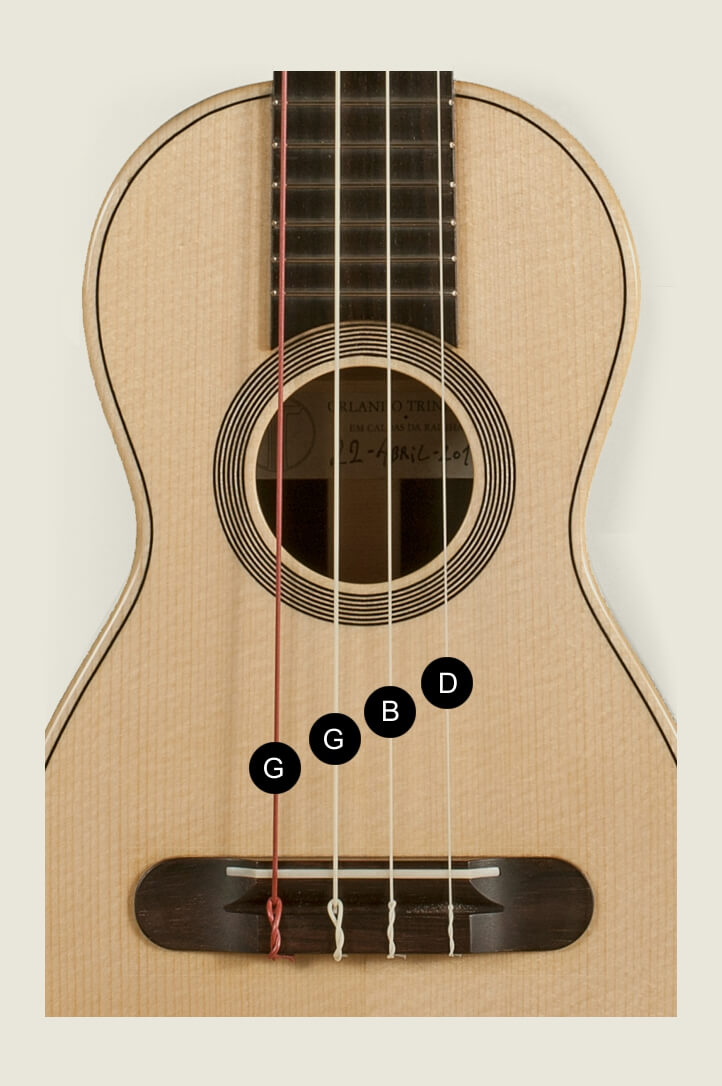

One of the most versatile tunings. Regardless of the tuning used, cutting the bridge in half is a solution for a more accurate tuning.
Strumming. It is the technique that stands out most in the Minhoto Cavaquinho due to its execution that allows the rhythm, harmony and melody to be created simultaneously. This is only possible because, in this instrument, the top is located at the same level as the neck, which leaves a very short distance between the strings and the top, thus preventing injuries to the fingers when strumming..
It is an instrument with a large number of tunings which, as in the case of the guitar, varies depending on where it comes from, the traditional forms and even the players.
The best-known tunings that have survived to this day are:


In the right hand technique, this chordophone (like the Machete/Braguinha) is plucked using the thumb and fingernail; however, it can be played with a plectrum/reed or with other techniques taken from the Guitar. The tunings used are: